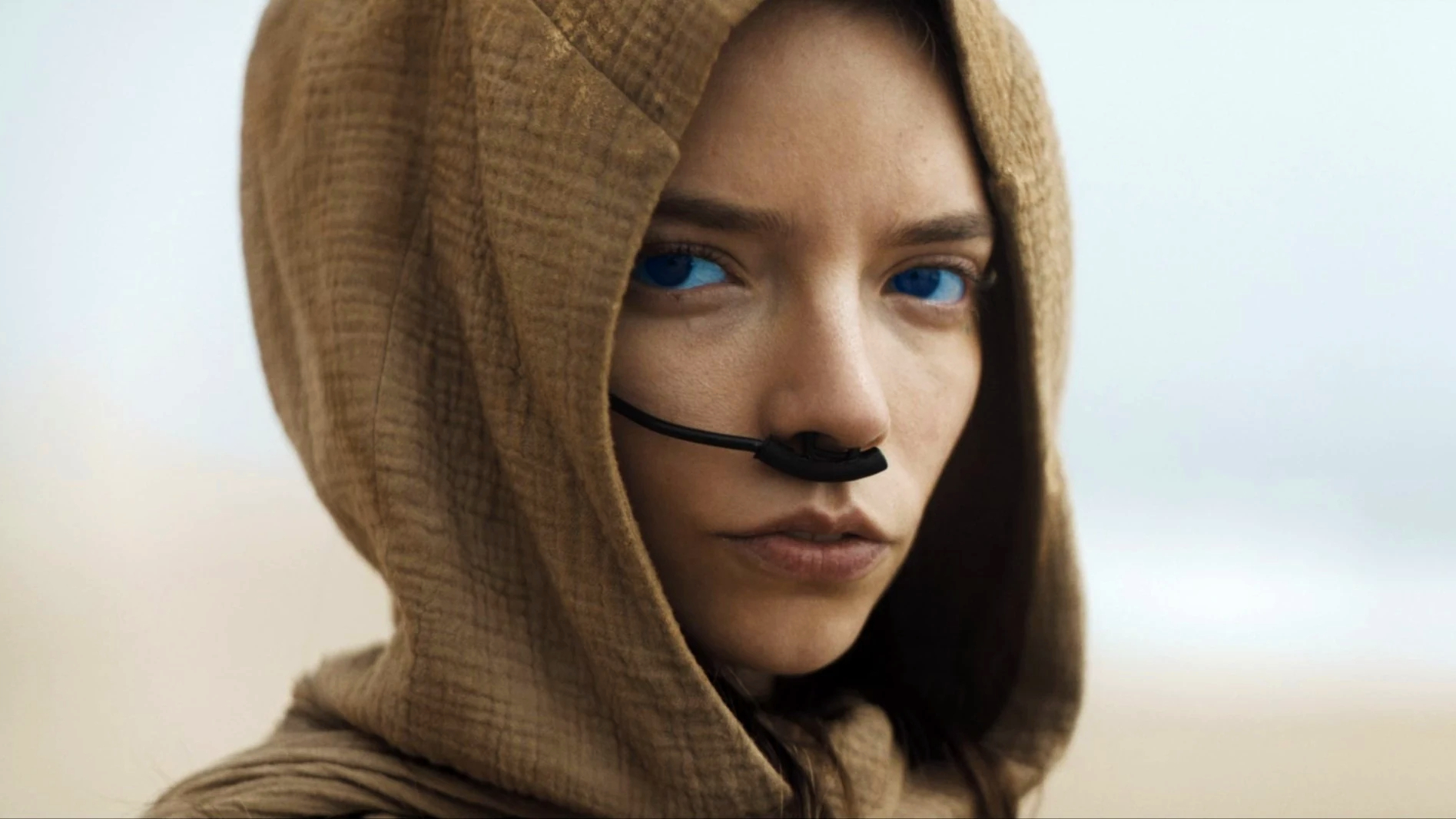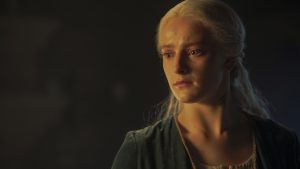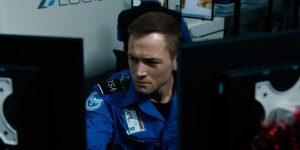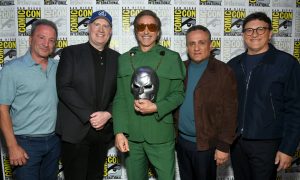
This article contains likely spoilers for Dune: Part Three as well as the books Dune Messiah and Children of Dune.
You are not prepared for what is to come. These are the words of promise, or prophecy, in Anya Taylor-Joy’s lone scene in Dune: Part Two. Whether the sequence is a kind of psychic chat room occurring between Paul “Muad’Dib” Atreides (Timothée Chalemet) and his unborn sister, Alia, or an actual vision of a conversation they will have in the future is obscure. Either way, the meeting seems otherworldly, not least of all because Paul and Alia are conversing on a beach. On Arrakis.
“Paul, you are not prepared for what is to come,” Alia warns. “You’ll now learn the truth about our family, and it will hurt you to the core.”
Alia is not unkind in her warning. There appears to be a deep reservoir of sympathy in a sister’s eyes as she anticipates the pain Paul must endure. But what that pain might be is left open to interpretation. If this sequence, which occurs after Paul has drunk from the poisoned Water of Life, is an actual psychic connection between Paul and the sibling still growing inside their mother’s womb, then she is warning him of how the Water has made all three surviving Atreides tragically aware that they’re descended from Baron Harkonnen (Stellan Skarsgård), the grotesque enemy who killed Paul and Alia’s father. However, the scene also offers another more ominous reading… about the truth still yet to come for House Atreides.
Dune: Part Two remains just as vague about what role Alia will play in the horrors to come. While Taylor-Joy provides an ethereal empathy in her scene, we’re also teased to dread the idea of an unborn fetus consuming the omnipotent powers offered by the Water of Life. “What have we done?!” gasps the old Fremen reverend mother when she realizes Jessica (Rebecca Ferguson) is pregnant. And after that heavy deed, not only is Jessica far more aggressive and manipulative in her interactions with Paul and the other Fremen, but she speaks to her preborn daughter like a nefarious confidant. They conspire together in how best to sway the native population into Paul’s cult of influence, and Alia is likewise giving Paul orders through Jessica for the rest of the film.
So what will that relationship be and what will it mean for Dune: Part Three? It’s an open question since the inherent problem with Alia Atreides is her character arc spans beyond the events of Dune Messiah, the novel which will be the basis of Dune: Part Three, the conclusion of director Denis Villeneuve’s planned trilogy. Yet there might be an opportunity to ignore—or reshape—the destiny author Frank Herbert imagined for Paul’s little sister on the page…
What Is to Come for Alia in Dune Messiah
While a minor presence in the first Dune novel (although she had more to do than what Villeneuve gave her in the latest film), Alia takes centerstage in Dune Messiah. On the page, Alia is one of several key point-of-view characters, arguably more important than any other except Paul and a resurrected Duncan Idaho (yes, Jason Momoa is almost certainly coming back).
About 16 years old during the events of Dune Messiah, Alia is depicted as even more precocious and wayward than she was as a child during the climactic events of Dune. Like Emperor Paul Muad’Dib, Alia has developed a cult of worship on Arrakis where pilgrims from around the universe come to pay homage to her statues. She performs duties and religious rites to help control the masses, but she also shirks official political duties and prefers operating from the shadows. She even builds a hiding hole in the ceiling above Paul’s great throne (with his knowledge) to spy on his courtiers without their knowing of her presence.
One perceptive character describes her to Paul as “the virgin-harlot. She is vulgar, witty, knowledgeable to a depth that terrifies, cruel when she is most kind, unthinking while she thinks, and when she seeks to build she is as destructive as a Coriolis storm.” Honestly, Herbert seems unsure of exactly what to do with Alia in the second novel. He develops sympathy for her conflicting impulses of a teenager’s impetuosity clashing with her old soul knowledge and experience from consuming the memories of previous generations.
There are even two rather uncomfortable subplots regarding Alia’s indecision about who she is that Villeneuve may wish to sidestep or recontextualize. Firstly, there is the fact she develops an uncomfortable romance with Duncan Idaho’s reanimated corpse even though he is middle-aged and she is a teenager. The real-life Taylor-Joy is 28 and Momoa is 44, but we imagine even if the characters are presumably aged up for Part Three that it will still be a somewhat difficult plot point to adapt.
Meanwhile, the other problematic thread is so underdeveloped that Villeneuve has a lot of latitude to remove it altogether: part of a conspiracy to destroy Paul by the Reverend Mother Mohiam (Charlotte Rampling) involves trying to manipulate Paul into desiring his sister and impregnating her with a new heir whom the Bene Gesserit could control as the Kwisatz Haderach.
By the end of the novel, the reverend mother’s Game of Thrones-like scheme (blessedly) fails and instead Alia begins a tentative romance with Duncan Idaho while accepting her role as regent until Paul and Chani’s infant twin children come of age to rule the universe.
The Problem With Stopping Alia’s Story There…
Villeneuve has made no secret that he views his adaptation of Dune Messiah as the conclusion for his vision. When speaking with Den of Geek earlier this year, he told us, “I think you cannot avoid Paul’s terrible purpose, that’s the structure of this whole enterprise.” Yet while Paul’s purpose is fulfilled by the end of Dune Messiah, Alia’s is not.
Perhaps a bit like how readers might’ve reacted to literary Paul’s victories in Dune only to next see him be compared to Hitler in Dune Messiah, some were left shocked by the dark turn Alia takes in Children of Dune. Personally, I found it more unsettling (and maybe unearned) because much of the first Dune’s literary framing device has Princess Irulan write in the past tense about Muad’Dib’s legacy, speaking of him in the same tone one might write about a blood-soaked tyrant or religious zealot. Conversely, Alia is depicted in Messiah as a character desperate to control her emerging powers (a metaphor for adulthood).
She does not succeed. In fact, they and the power of the throne she inherits by way of regency corrupt Alia thoroughly. When we meet her in Children of Dune, she rules a more luxurious and decadent court than her brother did, and she has used her supernatural powers to slow her aging (an abominable heresy in her mother’s eyes). She is then fully undone when she becomes possessed with the spirit of her dead grandfather, the Baron Harkonnen, who in the first book she killed (Villeneuve changed it to Paul being the one to kill their grandfather onscreen).
She initially resists the Baron’s influence before succumbing and even imitating his murderous bedroom appetites. At the end, she ultimately kills herself in a suicide derived from shame and fear at being unable to control the Baron’s influence or herself—this also after her nephew and husband (Paul’s son and Duncan Idaho) have already overthrown her rule.
To Adapt Children of Dune’s Alia or to Ignore Her?
Which brings us to the challenge facing Villeneuve in genuinely introducing Alia in what is also supposed to be the last installment of this Dune adaptation. The Alia of Dune Messiah is a sympathetic if still eerie presence, and one which like Paul’s children is falsely set up at the end to offer a glimmer of hope for the universe after Paul’s failed reign as emperor.
But would Villeneuve want to end the story with Alia as a false hero or might he condense Alia’s arc into one film? There is no shortage of weirdness in the Dune universe, and Villeneuve has proven adept at slowly conditioning audiences into taking baby steps into the surreal, be it by way of Paul’s precognition in Part One or later in Part Two witnessing Lady Margot (Léa Seydoux) use the Bene Gesserit’s Voice to seduce and manipulate Feyd-Rautha Harkonnen (Austin Butler). We imagine leaning into the demonic possession tropes introduced in Children of Dune could appeal to Villeneuve’s sensibility and would allow Taylor-Joy plenty to play with if she were given the chance to go the full Linda Blair. After all, she is the VVitch.
… And yet, we suspect that Villeneuve might be better served by ignoring Herbert’s journey for Alia altogether. The filmmaker has already shown a knack for exploiting drama that would appeal to a 21st century audience after it was left on the table in the books. The most striking example of this is having Zendaya’s Chani be skeptical of Paul’s messianic image and then becoming outraged that he would claim Princess Irulan’s hand in marriage at the end of Dune: Part Two.
Similarly, Villeneuve has already reduced Alia’s strange supernatural connection to the Baron by having Paul be the one to end their grandfather’s life, which was one seeming factor in the grotesque fiend’s ability to glob onto Alia’s mind (the other that she, unlike Paul and Paul’s children, was afraid to let the voices of dead relatives into her head).
We’re also reminded of another thing Villeneuve told us this year: “I always have been, since I was born as a filmmaker, concerned, inspired, and sensitive about the female condition and women’s relationship with power.” He even went on to say he wanted his movie “to be an adaptation about the Bene Gesserit. I want the Bene Gesserit to be at the center of the epicenter of this adaptation.”
One way to view that quote is that he seeks to underline how women pull the strings of this universe and navigate the feudal and patriarchal systems Herbert created. Perhaps that could include Alia being corrupted by the soul of a lecherous man… but perhaps not. Another way to view Alia’s fate is that unlike the men in her family, she is presented as too weak to control the temptation of their power. And while fleeting in appearance in Dune: Part Two, the look of empathy in Alia’s eyes at Paul suggests an interpretation of the character far less monstrous (or read: regressive) than how she’s depicted in Children of Dune. After all, she’s depicted by an ocean that never will exist on Arrakis in her or Paul’s lifetimes.
This is not to say she may not be corrupted by the power the Atreides wield. After all, no viewer should be under any illusion that there are any good guys in a movie that concludes with the protagonist saying, “Send them to paradise.” But there are other ways to explore that than the ghost of a grandfather taking hold.
If Dune: Part Three really does mark the end of that cinematic journey into paradise, there is an opportunity for Villeneuve to telescope Alia’s full arc from Children of Dune. Or better yet, he might improve on it by finding a more interesting way of depicting the corrosive effect of power on the broken children of House Atreides.
The post Dune 3: The Problem With Adapting Alia From the Books appeared first on Den of Geek.






